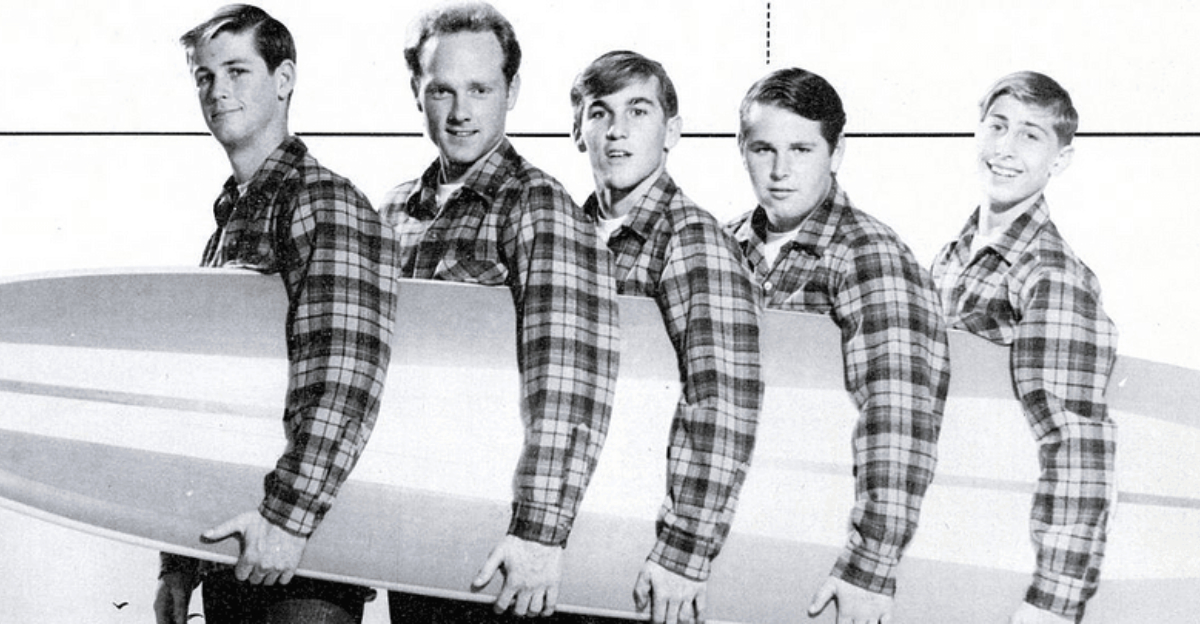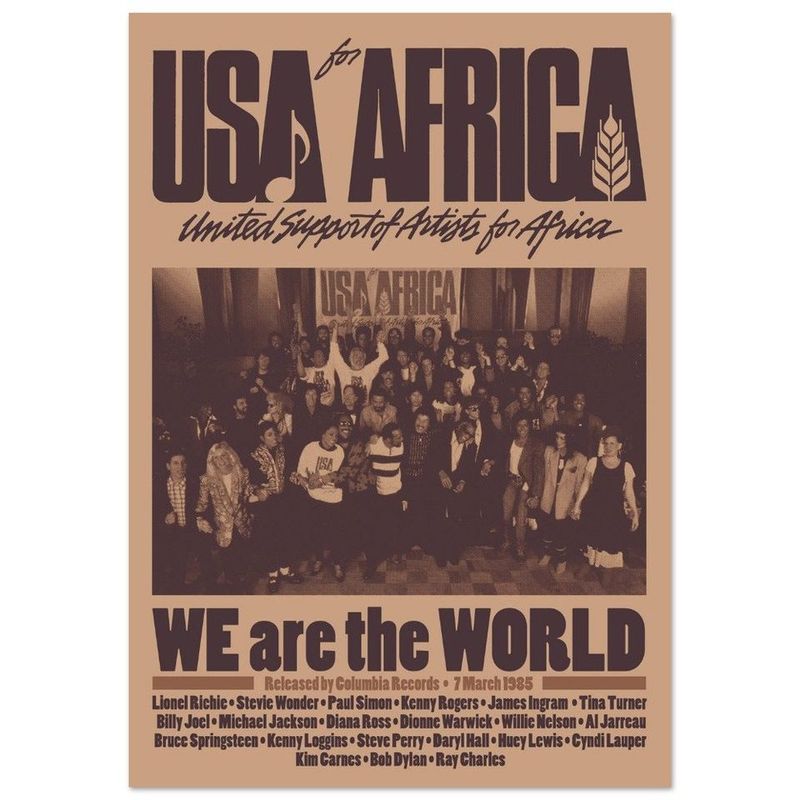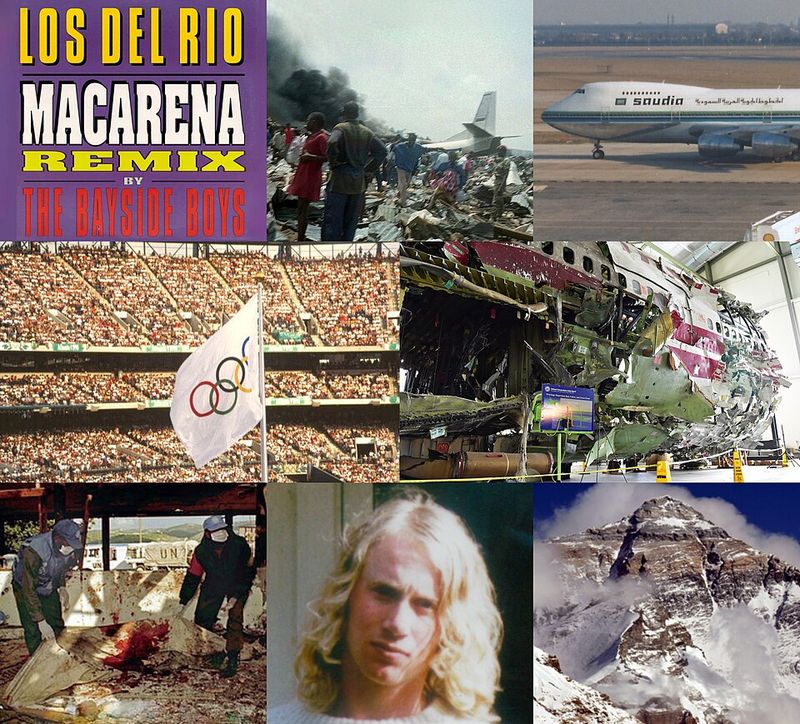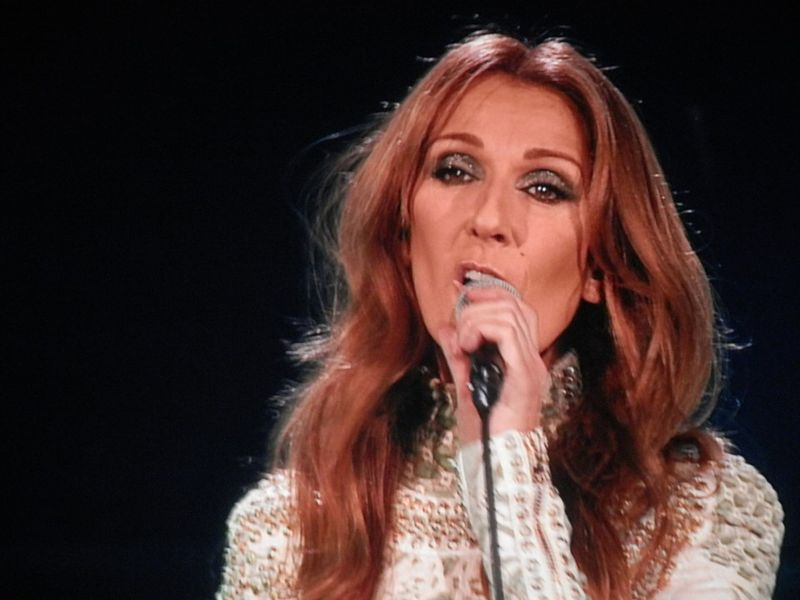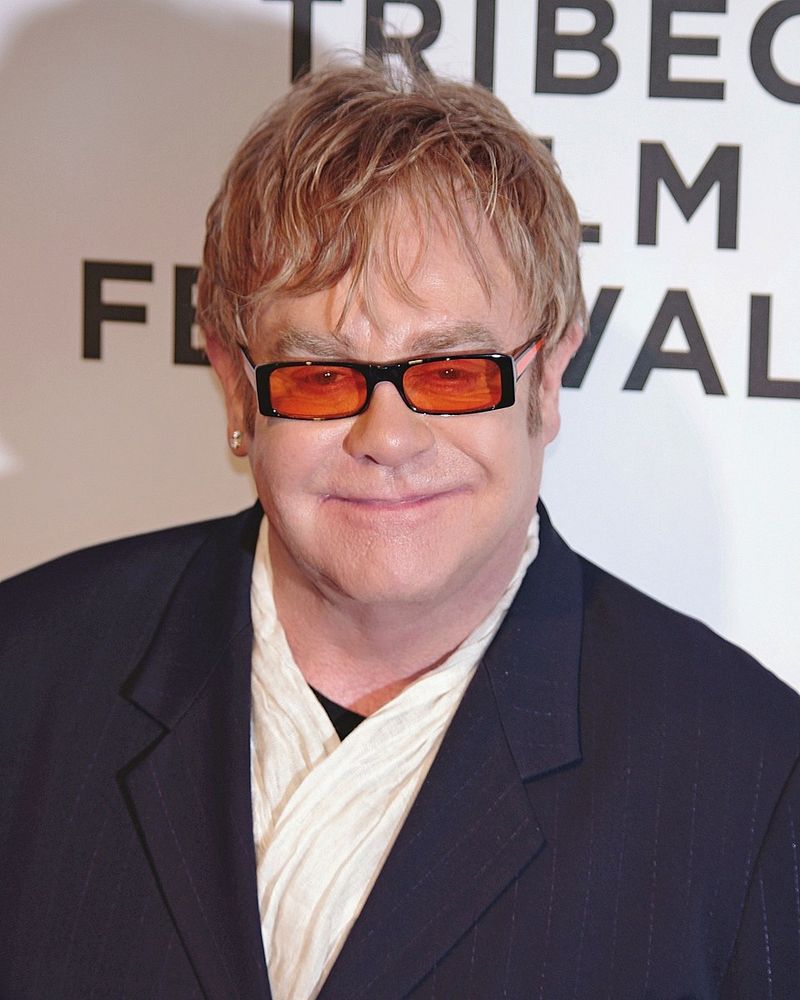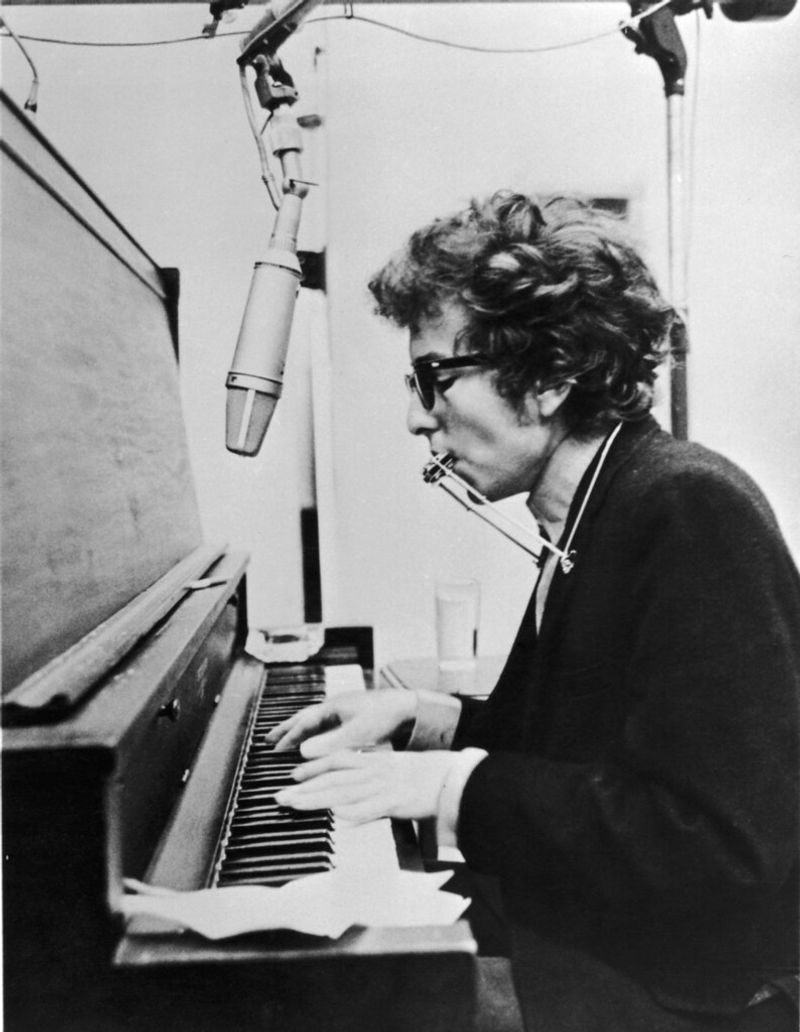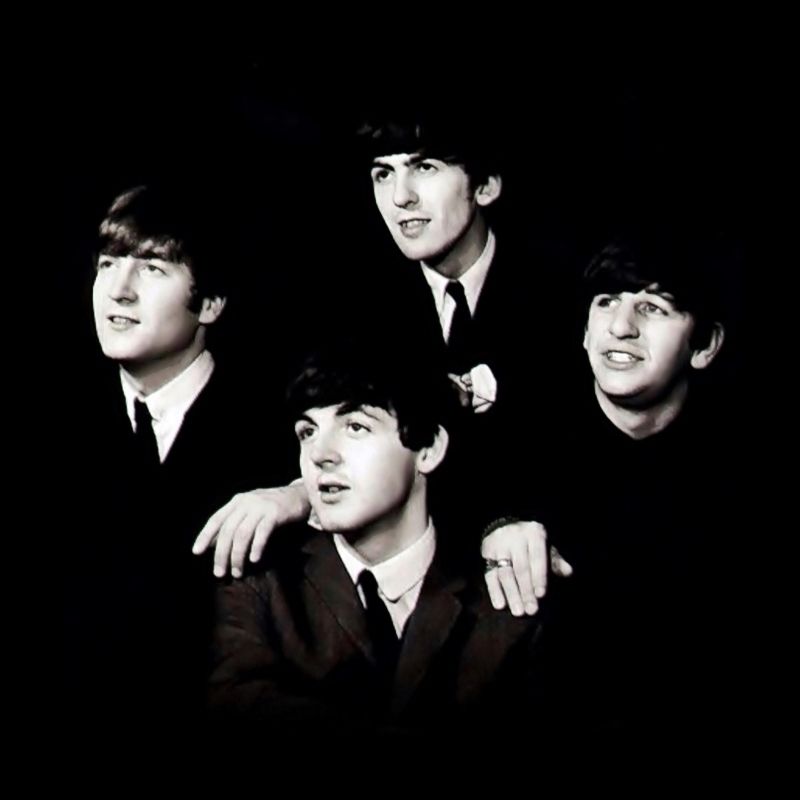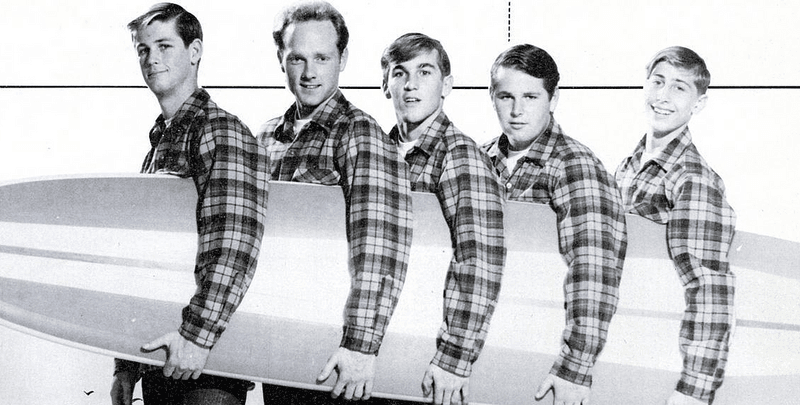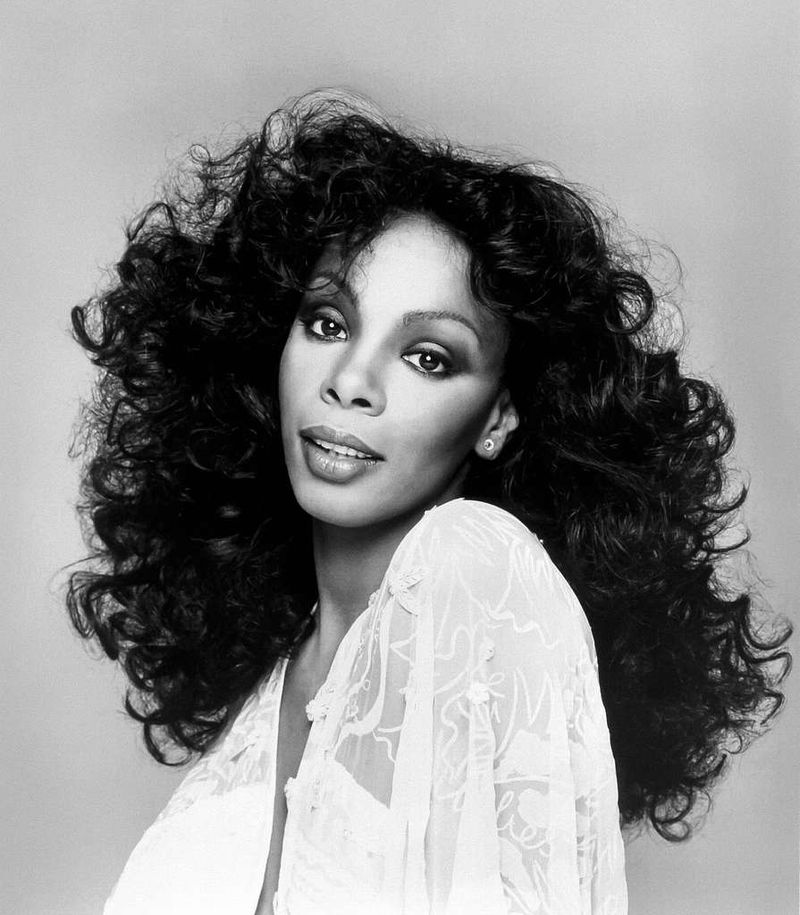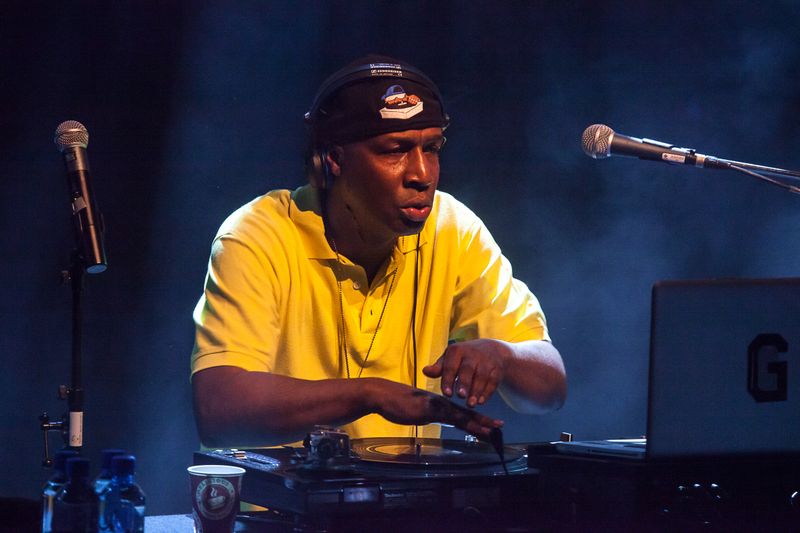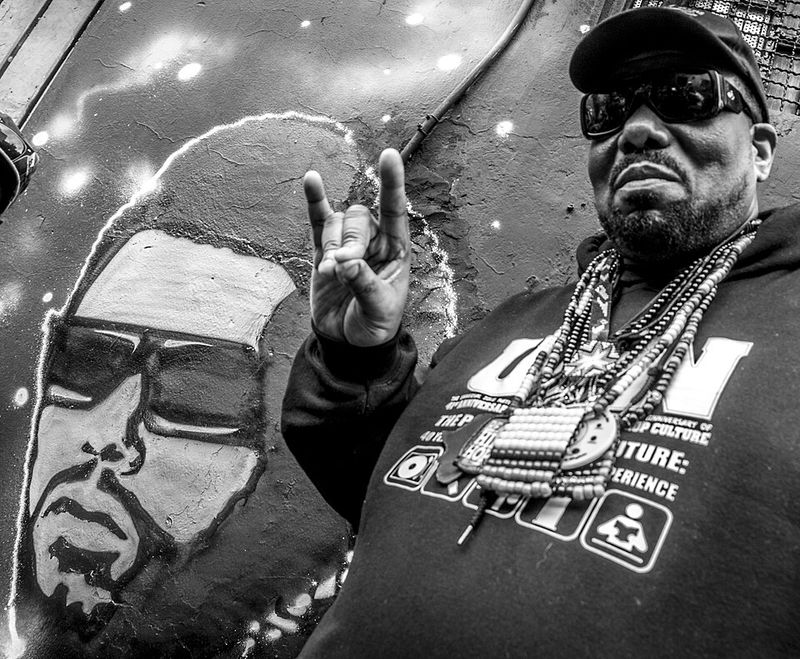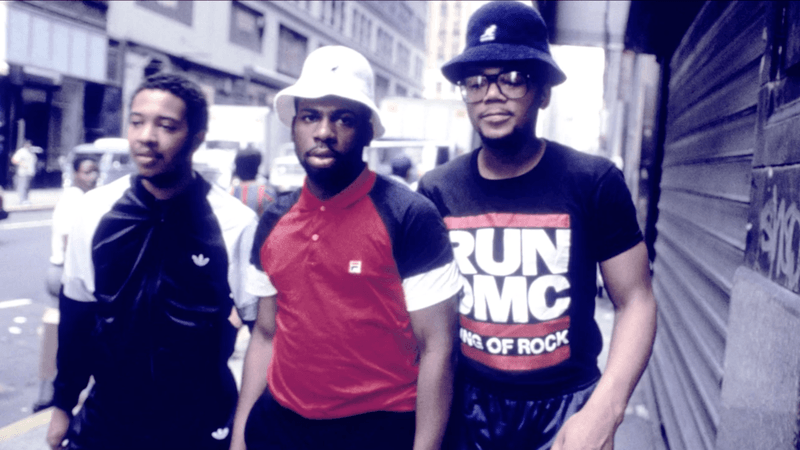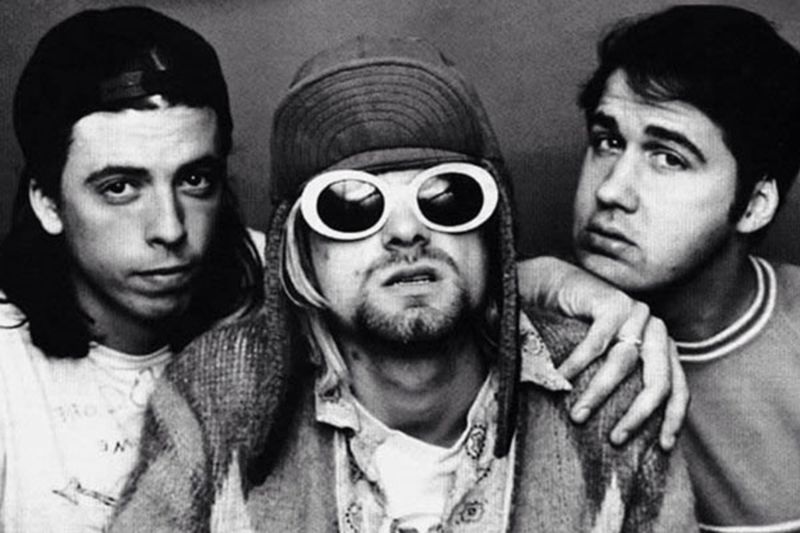Some songs become massive hits and earn the label “historic” simply because they sold millions or dominated the charts for weeks. But being popular doesn’t always mean a song changed how music was made or inspired future artists. On the flip side, certain tracks truly revolutionized the industry, they broke rules, introduced new sounds, or opened doors for entire genres. This list separates the overrated classics from the genuine game-changers that shaped the soundtrack of our lives.
1. USA for Africa — “We Are the World” (1985)
Superstar voices packed into one studio to raise money for African famine relief—that’s the story behind this mega-charity single. Michael Jackson and Lionel Richie wrote it, and Quincy Jones produced it, bringing together legends like Stevie Wonder, Bruce Springsteen, and Tina Turner.
The song raised over sixty million dollars and inspired countless benefit singles afterward. Yet musically, it stuck to a safe power-ballad formula with a big, emotional chorus.
Nothing about the melody or production pushed boundaries or introduced fresh ideas. Historic for its humanitarian impact? Absolutely. A blueprint for sonic innovation? Not quite.
2. Los del Río — “Macarena” (Bayside Boys Mix) (1995/96)
Everyone knew the dance: hands out, hands on shoulders, hands on hips, wiggle, jump, repeat. The Bayside Boys remix turned a Spanish party tune into a worldwide phenomenon, spending fourteen weeks at number one in America.
Weddings, sporting events, school dances—the Macarena was everywhere in 1996. But once the craze faded, so did its musical influence.
No major artists copied its style, and no new genre sprouted from it. The song became a nostalgic punchline rather than a template for future pop. Cultural moment? Huge. Lasting musical legacy? Minimal at best.
3. Robin Thicke & Pharrell — “Blurred Lines” (2013)
Catchy bassline, hand claps, and a whistled hook made this the summer jam of 2013. Radio stations played it nonstop, and it topped charts around the globe.
Then came the lawsuit: a jury ruled the song copied Marvin Gaye’s “Got to Give It Up,” and the court ordered millions in damages. That verdict became the song’s lasting mark—not any musical innovation it brought.
Instead of inspiring a wave of imitators, “Blurred Lines” became a cautionary tale about copyright in the streaming age. Its legal drama overshadowed any creative influence it might have had on pop music’s evolution.
4. Céline Dion — “My Heart Will Go On” (1997)
James Cameron didn’t want a pop song in Titanic, and Céline Dion wasn’t thrilled about recording one more ballad. Yet their reluctant collaboration won the Oscar, dominated radio, and became inseparable from the film’s legacy.
The sweeping strings and Dion’s powerful voice fit the movie’s romance perfectly. Still, the song refined an existing power-ballad template rather than inventing something new.
Countless similar ballads had come before, and many followed the same formula afterward. Historic in sales and cultural reach? Undeniably. A revolutionary force in pop music? Not really—it polished a well-worn path.
5. Elton John — “Candle in the Wind 1997” (1997)
Originally written in 1973 about Marilyn Monroe, Elton John reworked the lyrics to honor Princess Diana after her tragic death. The single sold over thirty-three million copies, making it one of the best-selling physical singles ever.
People around the world connected with its heartfelt tribute during a moment of collective grief. Musically, though, it was the same 1973 melody with updated words.
No new production techniques, no genre-bending sounds—just a rewrite for a historic occasion. The song’s stature rests entirely on that emotional moment, not on any musical innovation or influence on future artists.
6. Bob Dylan — “Like a Rolling Stone” (1965)
Radio stations in 1965 had an unwritten rule: keep songs under three minutes. Dylan shattered that ceiling with a six-minute epic that sneered, questioned, and challenged listeners in ways pop radio had never heard.
“How does it feel?” he asked over and over, backed by a swirling organ and electric guitars. Folk purists booed the electric sound, but rock music was never the same.
Complex, confrontational lyrics became acceptable—even celebrated—in mainstream rock. The song proved that pop singles could be long, literary, and unapologetically raw, paving the way for countless artists to experiment beyond safe formulas.
7. The Beatles — “I Want to Hold Your Hand” (1963/64)
Beatlemania exploded in America the moment this single hit number one in early 1964. Suddenly, British bands were everywhere, and the entire landscape of sixties pop shifted overnight.
The song’s infectious energy, tight harmonies, and driving beat captured teenage excitement in a way American acts hadn’t quite managed. Ed Sullivan’s TV stage became ground zero for a cultural earthquake.
Record labels scrambled to sign UK groups, radio playlists filled with British accents, and rock ‘n’ roll took on a whole new identity. The British Invasion wasn’t just a trend—it was a seismic shift that redefined what pop music could sound like.
8. The Beach Boys — “Good Vibrations” (1966)
Brian Wilson called it a “pocket symphony,” and he wasn’t exaggerating. Recording sessions stretched across months and multiple studios, with Wilson splicing together dozens of tape segments to create a seamless, ever-shifting soundscape.
The Electro-Theremin gave the track its eerie, otherworldly hum, while layered vocal harmonies and unexpected tempo changes kept listeners guessing. No pop single had ever been assembled this way before.
“Good Vibrations” proved the recording studio itself could be an instrument, inspiring producers from the Beatles to modern electronic artists to think beyond live performance. Modular recording and meticulous studio craft became the new frontier.
9. Donna Summer — “I Feel Love” (1977)
Giorgio Moroder and Pete Bellotte built the track entirely from synthesizers and sequencers—no guitars, no live drums, just pulsing electronic beats and Donna Summer’s soaring voice floating above.
When it dropped in 1977, nothing on the radio sounded remotely like it. The song’s hypnotic, machine-driven groove became the blueprint for Hi-NRG, house, techno, and eventually all of modern EDM.
Brian Eno reportedly told David Bowie, “I have heard the sound of the future.” He was right. Decades later, DJs and producers still trace their electronic roots back to those eight minutes of shimmering, sequenced perfection.
10. The Sugarhill Gang — “Rapper’s Delight” (1979/80)
Hip-hop had been building in New York block parties for years, but mainstream radio hadn’t noticed. Then “Rapper’s Delight” arrived, riding Chic’s “Good Times” bassline and delivering playful rhymes over nearly fifteen minutes.
It cracked the U.S. Top 40, introducing millions of listeners worldwide to rapping as a legitimate musical form. Suddenly, radio programmers and record labels realized hip-hop wasn’t just a local fad.
The song opened the floodgates: within a few years, rap acts were signing major deals and touring internationally. Without this breakthrough, hip-hop’s journey from the Bronx to global dominance would have taken much longer.
11. Grandmaster Flash & The Furious Five — “The Message” (1982)
“It’s like a jungle sometimes, it makes me wonder how I keep from going under.” Melle Mel’s opening lines painted a stark picture of inner-city struggle, poverty, and survival.
Before “The Message,” most rap songs celebrated parties and good times. This track flipped the script, proving hip-hop could tackle serious social issues with journalistic honesty.
It laid the groundwork for conscious rap, political hip-hop, and every artist who’s used rhymes to shine a light on injustice. The song showed the world that rap wasn’t just entertainment—it was a powerful tool for storytelling and protest.
12. Afrika Bambaataa & the Soulsonic Force — “Planet Rock” (1982)
Bambaataa sampled Kraftwerk’s icy synth melodies and paired them with the booming thud of the Roland TR-808 drum machine, creating a sound nobody had heard before.
The result was electro: a futuristic, robotic blend of hip-hop beats and electronic music that felt like it beamed in from another dimension. Miami bass, freestyle, and countless electronic subgenres trace their DNA directly back to this track.
“Planet Rock” proved that hip-hop didn’t need funk or disco loops to thrive—it could fuse with anything, even German synth-pop, and create something entirely new and influential.
13. Billie Holiday — “Strange Fruit” (1939)
Abel Meeropol wrote the haunting poem about lynching in the American South, and Billie Holiday turned it into one of the most powerful protest songs ever recorded.
Radio stations refused to play it, and Columbia Records wouldn’t release it, but Holiday performed it anyway, closing her sets with its devastating imagery. The Library of Congress later added it to the National Recording Registry.
“Strange Fruit” proved popular music could be a weapon for civil rights and social justice, not just entertainment. It opened the door for generations of artists to use their voices for political change and moral courage.
14. Run-DMC & Aerosmith — “Walk This Way” (1986)
Producer Rick Rubin had a wild idea: take Aerosmith’s 1975 rock classic, strip it down, and let Run-DMC rap over it with Steven Tyler and Joe Perry joining in.
The result was a genre-smashing hit that reintroduced Aerosmith to a new generation and forced rock radio to play hip-hop. MTV put the video in heavy rotation, and suddenly rap-rock collaborations seemed not just possible but inevitable.
Countless cross-genre experiments followed, from Public Enemy with Anthrax to Linkin Park and beyond. This single proved that hip-hop and rock could coexist, collaborate, and create something bigger than either genre alone.
15. Nirvana — “Smells Like Teen Spirit” (1991)
Kurt Cobain’s opening guitar riff cut through the polished pop and hair metal dominating early-nineties radio like a buzzsaw. Within weeks, “Smells Like Teen Spirit” became an anthem for a generation that felt alienated and misunderstood.
Grunge exploded out of Seattle, flannel became a uniform, and major labels scrambled to sign every alternative rock band they could find. MTV shifted its focus, and the entire mainstream sound pivoted toward raw, unpolished authenticity.
The song wasn’t just a hit—it was a cultural earthquake that buried the eighties and defined the nineties, proving underground sounds could topple commercial giants overnight.
